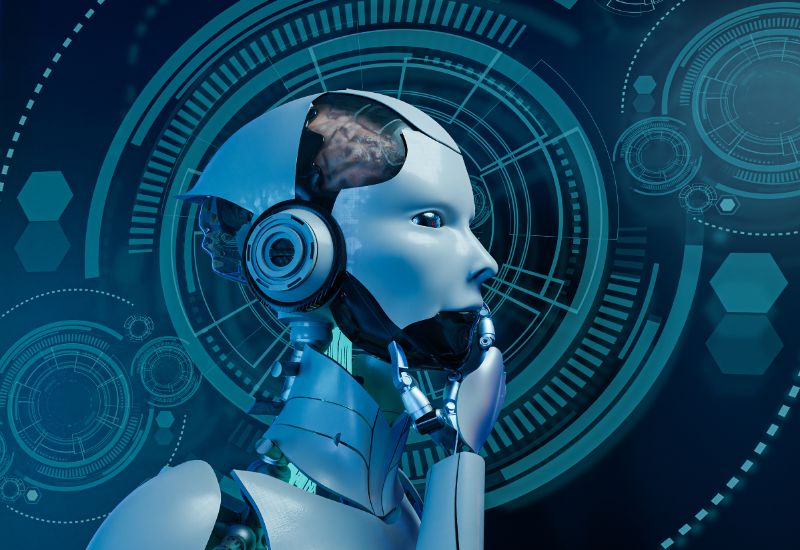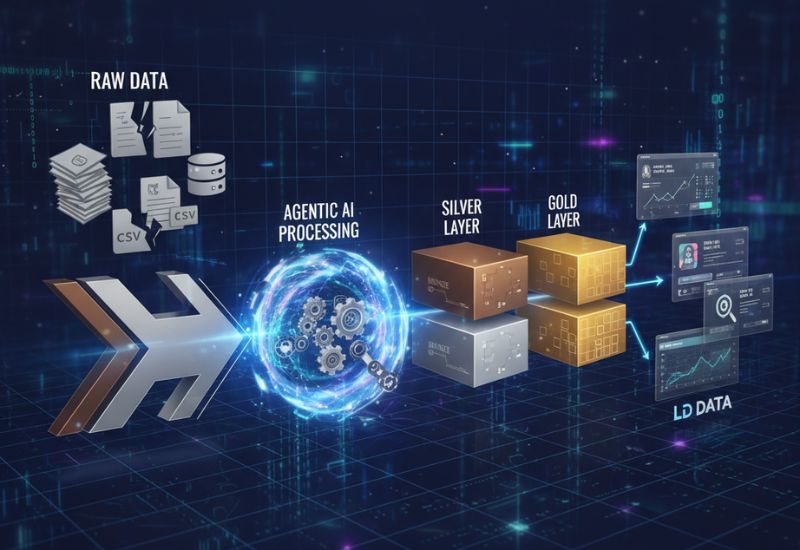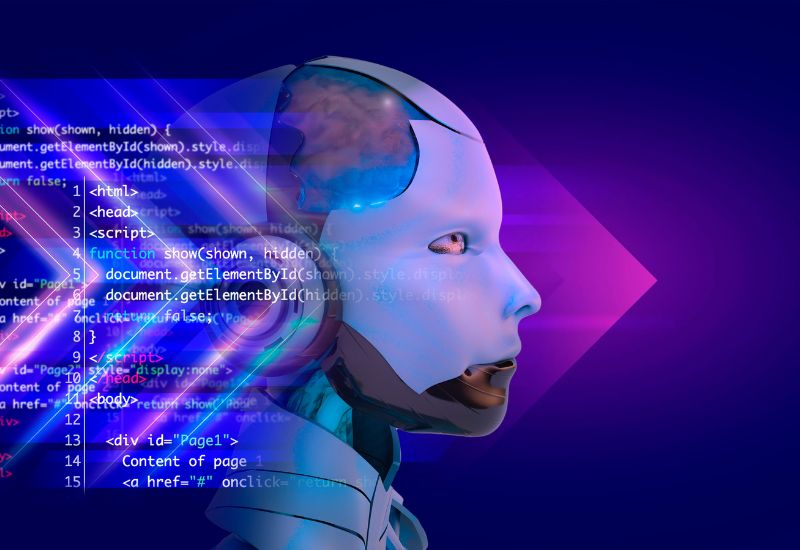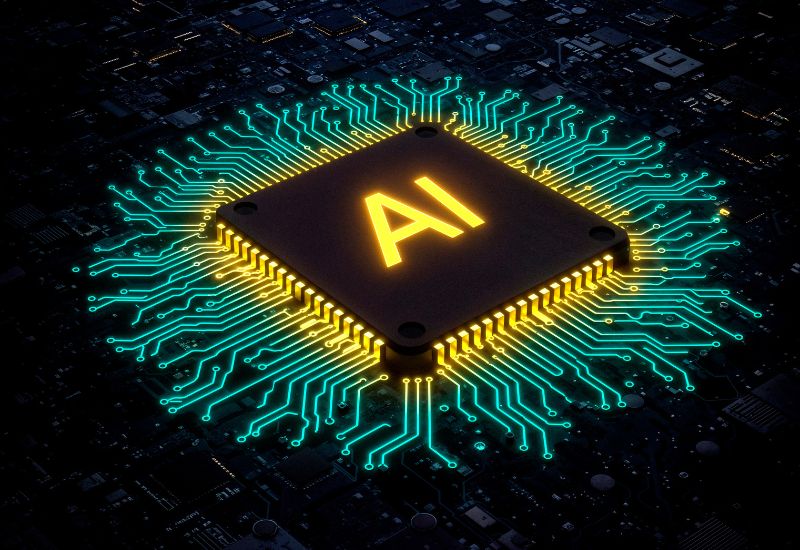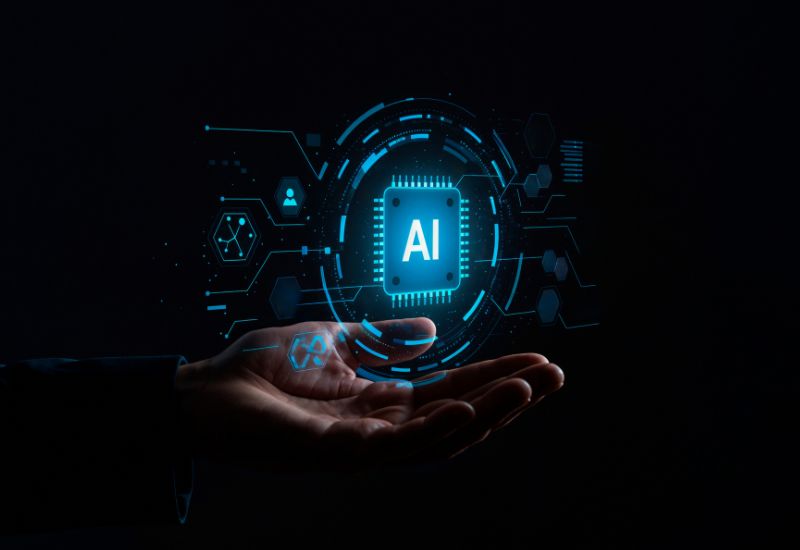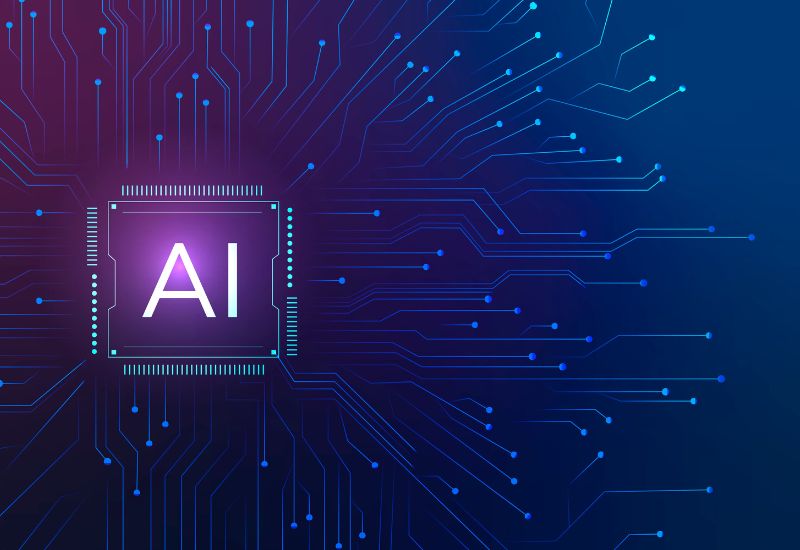What is Agentic AI Workflow?
Artificial intelligence is changing, and agentic AI workflows help it do more than just simple tasks. These AIs can make plans, decide what to do, and change how they act to meet their goals.
In simple terms, agentic AI workflows combine GenAI capabilities with automation and intelligent problem-solving. Instead of just following commands, these AI agents understand the context, choose the best course of action, and carry out complex processes with minimal human input. This approach transforms industries by boosting productivity, improving accuracy, and enabling scalable, dynamic operations.
In this guide, we’ll explore how agentic AI workflows work, why they matter, and how businesses can use them to drive smarter automation and long-term growth.
How Does an Agentic AI Workflow Work?
Imagine an IT company that needs to prepare weekly reports on system performance for its clients. In a traditional setup, a team member manually collects server logs, monitors uptime, checks for issues, compiles the data, and creates a report. If something goes wrong, like a missing log file or an unexpected spike in errors, the process stalls and needs human intervention.
With an agentic AI workflow, the AI assistant approaches the task differently. It understands the goal, makes decisions along the way, and adjusts its actions when something unexpected happens.
1. Starts with a clear objective
The IT team gives the instruction: "Generate a weekly performance report for all active clients. These reports can be created through customized solutions for your needs, depending on what insights matter most.
2. Understands the current situation
The AI checks all the relevant sources like server health dashboards, error logs, monitoring tools, and identifies what data is available or missing.
3. Plan out the steps
It creates a process customised to the current data. For example, it might begin by checking uptime records, then analyze server response times, followed by scanning for critical error trends.
4. Takes action based on the findings
If an error rate is unusually high, the AI flags it and adds an explanation to the report. If one of the tools is offline, it finds alternative ways to get the required data.
5. Adjusts if something doesn’t work
If a step fails, like a corrupted log or slow API response, the AI adapts. It tries a different method, uses historical data for context, or delays that part while continuing the rest.
6. Learns and improves over time
The more data it generates, the better it becomes. It remembers which servers often fail, which metrics clients care most about, and how to present insights clearly.
This kind of adaptive, intelligent process makes agentic AI workflows ideal for IT companies. Instead of following rigid instructions, the AI works more like a smart teammate thinking through problems and staying flexible until the job is done.
Key Components of Agentic AI Workflows
Agentic AI workflows are not just automated processes, they are intelligent systems that can think through tasks, use tools, and adjust as they go. Here’s what makes them work:
1. Intelligent Task Handlers (AI Agents
These are smart systems that do more than follow fixed rules. They understand what needs to be done, figure out how to do it, and take action. They behave more like a team member who can make decisions, not just a script executor.
2. Language Understanding Engines
At the core of these systems are advanced models that can read and respond in human language. This helps them understand instructions, ask clarifying questions, and explain results clearly.
3. Smart Tools and Resources
To get tasks done well, AI agents use digital tools that help them access live information and software platforms beyond what they remember. This includes accessing unified storage via a cloud data warehouse.
4. Guided Improvement Through Feedback
These systems learn better when they get feedback. Whether it’s from a human checking the results or from another system giving input, feedback helps them improve their performance over time.
5. Prompting
The way we give directions to AI changes how it performs. Clear instructions and examples help it do the job better and more accurately.
6. Teamwork Between Agents
In more complex scenarios, multiple agents can work together, each focusing on a specific task. Just like a team, they communicate, share updates, and combine their work to get better results faster.
7. System Integrations
To be truly useful in real-world settings, these agents need to connect with existing company tools and systems. From internal apps to cloud services, these connections let the AI do its job within your existing setup.
Common Types of Agentic AI Workflows
Agentic AI workflows are being used across many industries to make work smarter, faster, and more adaptive. Here are some common types of agentic AI workflows that businesses and teams are starting to use:
1. Task Automation with Real-Time Decision-Making
Unlike traditional automation, which follows fixed rules, agentic systems can adjust their actions based on live feedback. For example, a support assistant can decide what to do next depending on the user’s replies, rather than following a pre-set script.
2. Research and Information Gathering
AI agents can act as researchers, browsing websites, reading documents, summarizing reports, or even comparing products or services. This is helpful in marketing, business planning, or even technical troubleshooting, where up-to-date data is needed.
3. Data Monitoring and Alerting
Agents can track performance metrics or monitor system logs in real time. If something unusual happens, like a sudden spike in website traffic or a drop in server performance, the agent can send alerts, suggest fixes, or even take corrective action automatically.
4. Content Generation and Review
Whether it’s drafting emails, social media posts, or reports, AI agents can create content that matches brand guidelines. They can also review and edit existing text for clarity, grammar, or tone, saving hours of manual work.
5. Personalized Customer Interaction
In customer service, agents can tailor responses based on previous interactions, preferences, or real-time data. This makes the experience smoother and more relevant for the customer without always needing a human rep.
These examples show that agentic AI workflows are not limited to one industry or task; they can be adapted to fit many needs, from customer service to operations, making them a powerful tool for modern businesses.
Patterns in Agentic AI Workflows
Agentic AI workflows follow key patterns that help AI systems handle tasks efficiently and adapt as needed. Here are the main patterns:
1. Sequential Task Processing
The workflow breaks down tasks into ordered steps. Each step is completed before moving to the next, allowing for clear progress tracking and decision-making.
2. Conditional Logic and Adaptation
The system changes its actions based on real-time inputs or results. If one approach fails, it switches to alternative methods or collects more data.
3. Feedback and Learning Loops
Agentic AI workflows include mechanisms to learn from past results. Feedback helps improve accuracy and decision-making over time.
4. Multi-Source Data Integration
The workflow pulls information from different tools, databases, and APIs to perform tasks more effectively.
5. Human-in-the-Loop Interaction
Humans can intervene in the workflow to provide input, validate decisions, or handle exceptions when necessary.
6. Modular Workflow Design
Workflows are built in flexible, interchangeable parts that can be updated or scaled without affecting the entire process.
These patterns enable an agentic approach to be flexible, intelligent, and efficient in managing complex tasks.
Agentic workflows vs Traditional workflows
In today’s fast-changing business environment, companies need workflows that can keep up. Traditional workflows have served us well for routine and simple tasks, but they often fall short when it comes to handling complexity and adapting to new information. This is where agentic AI workflows come into play. They bring flexibility, intelligence, and continuous learning to the process.
Feature | Traditional Workflows | Agentic Workflows |
| Flexibility | Fixed, follow preset rules | Dynamic, adapt based on new information |
| Decision-Making | Simple logic and static conditions | AI-driven, learns and chooses the next steps |
| Handling Complexity | Suitable for simple, repetitive tasks | Handles multi-step, complex problems |
| Human Interaction | Requires manual intervention for exceptions | Integrates humans only when necessary |
| Learning & Improvement | Static requires manual updates | Continuously learns and improves from feedback |
| Tool Integration | Limited to predefined tools and data sources | Connects with multiple tools, APIs, and datasets |
Benefits of Agentic AI Workflows
1. Increased efficiency and productivity
Agentic approaches are game changers when it comes to getting things done. Think about all those mundane, time-consuming activities eating up your day – data entry, scheduling, sorting information. An agentic AI workflow tackles these automatically while you focus on what really matters.
The beauty? These systems work around the clock without breaks, complaints, or that 3 PM energy crash we all experience. They process information at lightning speed compared to manual methods, often completing in seconds what might take humans hours.
2. Autonomous decision-making
These workflows don't just follow orders – they make smart choices on their own. Using predefined rules and AI capabilities, they can evaluate situations and take appropriate actions without human babysitting.
Picture this: your agentic AI workflow notices an unusual spike in website traffic. Instead of waiting for you to notice, it automatically allocates more server resources, sends you a notification, and starts collecting data on what's driving the traffic. All before you've even had your morning coffee.
3. Constant improvement
They analyze their own performance, identify bottlenecks, and refine their processes. It's like having an employee who's constantly figuring out how to do their job better.
These systems get smarter from every action and outcome. After a year, they perform way better than when first set up.
4. Better user experience
When workflows operate seamlessly in the background, everyone benefits. Customers get faster responses. Support tickets resolve more quickly. Information flows to the right places automatically.
The real magic happens when users don't even notice the technology working. They just know that suddenly, everything feels smoother, more responsive, and more personalized. Their questions get answered before they even finish asking them.
5. Scalable automation
Traditional automation often breaks under pressure. Add too many tasks or users, and the whole system grinds to a halt. Agentic approaches shine exactly where other systems fail.
They're built to scale. Whether you're processing ten requests or ten thousand, the core architecture adapts. As your business grows, your workflows grow with you – no major overhauls required.
6. Reduced costs
The financial impact of implementing agentic AI workflows is striking. Companies typically see savings from multiple angles:
- Lower staffing costs for routine tasks
- Fewer errors requiring expensive fixes
- Reduced downtime and faster problem resolution
- Better resource allocation
- Improved decision-making leading to higher ROI
The initial investment often pays for itself within months, not years. And as the system improves over time, so does your return.
 Read more about Agentic AI: https://dataplatr.com/blog/what-is-agentic-ai
Read more about Agentic AI: https://dataplatr.com/blog/what-is-agentic-ai
Limitations of Agentic AI Workflows
The Reality Check! Agentic AI workflows aren't magical solutions that solve every business problem. Despite their impressive capabilities, they come with significant limitations you need to understand before diving in.
First off, these systems depend on the information they’re trained with. If the data is biased or incomplete, the results will be too.
The technology also struggles with truly creative thinking. While AI can combine existing ideas in clever ways, it can't generate the kind of revolutionary thinking that comes from human inspiration and lived experience.
Then there's the reliability factor. These systems occasionally hallucinate, producing confident-sounding but completely fabricated information. Mistakes in fields like medicine or banking can cause real harm.
Cost Considerations
The computational resources required for sophisticated agentic AI workflows aren't cheap. We're talking significant investment in:
1. Infrastructure setup
2. Ongoing maintenance
3. Specialized talent to manage the systems
4. Energy consumption for processing
For smaller organizations, the ROI might not justify the expense. Even for large firms, it’s important to look at the trade-off between value and cost.
The Human Element
Despite advances in AI, certain human skills remain irreplaceable:
1. Emotional intelligence and empathy
2. Ethical judgment calls in complex situations
3. Adaptability to completely novel scenarios
4. Cultural sensitivity and context awareness
The most successful implementations acknowledge these limitations and design hybrid systems where humans and AI complement each other's strengths.
The Impact of Agentic AI Workflows
In today’s fast-moving digital world, the way work gets done is changing. One of the most exciting changes is the rise of agentic AI workflows, a new style of working where smart digital tools can take action on their own to complete tasks.
So, what exactly does that mean?
Imagine you have a helpful assistant who not only reminds you about your to-do list but also goes ahead and does some of the tasks for you. For example, they book your meetings, send follow-up emails, gather data, or even update your reports — all without you needing to guide them step by step. That’s the idea behind agentic workflows. Instead of just giving you suggestions, these systems take the next steps automatically, saving you time and effort.
Now let’s explore the real impact this can have:
1. Saves Time and Boosts Productivity
With repetitive and routine tasks handled automatically, you and your team can focus on more important work, the kind that needs creativity, decision-making, and a human touch. This can lead to getting more done in less time.
2. Reduces Errors
When people do the same task over and over, mistakes can happen, like copying the wrong data or missing a step. Agentic AI workflows are consistent and follow the same rules every time, which helps reduce these small but costly errors.
3. Improves Team Collaboration
Because these tools can automatically update shared documents, notify team members, and keep systems in sync, everyone stays on the same page without needing to send extra emails or hold extra meetings.
4. Frees Up Mental Space
By handling the small, everyday tasks, agentic workflows let you clear your mind. You no longer have to remember every little detail because the system is already taking care of it.
5. Supports Better Decision-Making
Some workflows don’t just take action; they gather data, analyze it, and provide helpful insights. This means you get the information you need faster, and you can make smarter decisions with more confidence.
Best Practices for Building Agentic AI Workflows.
Agentic workflows are smart systems that can act on their own to get tasks done. They’re like helpful assistants that don’t just follow orders but also make decisions and take steps independently. To build these workflows effectively, there are some simple best practices you should keep in mind. These help make sure your workflows are useful, reliable, and easy to manage.
1. Start with Clear Goals
Before building an agentic AI workflow, know exactly what you want it to achieve. Whether it’s booking appointments, sending reminders, or updating records, having clear goals helps guide how the workflow should act and when.
2. Keep Tasks Simple and Focused
Break down complex jobs into smaller, manageable tasks. When each part is simple, it’s easier for the workflow to handle them correctly without confusion. This also makes fixing problems easier if something goes wrong.
3. Make Rules Easy to Understand
Set clear rules about when and how the workflow should act. For example, "If a customer hasn't replied in 3 days, send a follow-up email." Simple, clear instructions help avoid mistakes and keep the process smooth.
4. Test Thoroughly Before Going Live
Before using your agentic workflow fully, test it in different situations. Try all possible paths and outcomes to make sure it works as expected. This helps catch any errors early and prevents bigger issues later.
5. Build in Flexibility
Things don’t always go as planned, so your workflow should be able to handle unexpected situations. Allow it to pause, ask for human help, or try alternative steps when needed. This makes the workflow more reliable.
6. Keep Human Oversight
Even though the workflow can act on its own, it’s important to have people check on it regularly. This helps catch unusual problems, update rules when things change, and improve the workflow over time.
7. Focus on User Experience
Make sure the workflow benefits the people involved, whether they are customers or team members. A good workflow should make life easier, reduce waiting times, and keep everyone informed.
8. Use Data to Improve
Track how well your workflow performs by collecting data. Look at things like speed, errors, and how often it needs human help. Use this information to make the workflow smarter and more efficient over time.
The Future of Agentic AI Workflows
Agentic workflows are already changing how we work by letting smart systems handle tasks on their own. But this is just the beginning. The future of these workflows holds even more exciting possibilities that could transform the way businesses and people get things done.
1. More Independence for Digital Helpers
Right now, agentic AI workflows can do simple to moderately complex tasks. In the future, these systems will become even smarter and more independent. They’ll be able to handle more complicated jobs, make better decisions, and adapt to new situations without waiting for human instructions.
2. Better Collaboration Between Humans and Machines
Instead of replacing people, agentic workflows will work alongside us as teammates. They’ll take care of repetitive or time-consuming tasks, freeing us to focus on creative thinking, problem-solving, and building relationships. This teamwork will help people be more productive and satisfied in their work.
3. Personalized and Context-Aware Actions
Future workflows will understand more about the people and situations they are helping with. This means they will customize their actions based on what’s happening right now like adjusting communication style depending on the customer or changing steps based on new data.
4. Continuous Learning and Improvement
Just like humans learn from experience, future agentic AI workflows will get smarter over time by learning from past actions and results. This will help them avoid mistakes, find better ways to complete tasks, and respond to changes faster.
5. Greater Use Across Industries
From healthcare to finance, manufacturing education, agentic workflows will become common tools everywhere. They will help hospitals manage patient care, banks process loans faster, schools personalize learning, and factories improve production, all by working smarter, not harder.
6. Stronger Focus on Ethics and Trust
As these workflows become more powerful, there will be more attention on making sure they act fairly, respect privacy, and keep users in control. Building trust will be key for companies to successfully use agentic AI workflows and for people to feel comfortable relying on them.
Conclusion:
Agentic AI workflows are changing the way businesses work. Instead of simply automating tasks, they bring real intelligence into the process. These systems can think ahead, solve problems, and improve over time with very little human input.
Whether it's creating reports, handling customer service, or monitoring systems, agentic AI workflows help save time, reduce mistakes, and boost productivity. They're like smart teammates who never sleep, always learn, and are ready to take on complex challenges.
As more companies explore this technology, it's becoming clear that agentic AI isn’t just a trend, but it’s the future of smarter, faster, and more flexible work.

